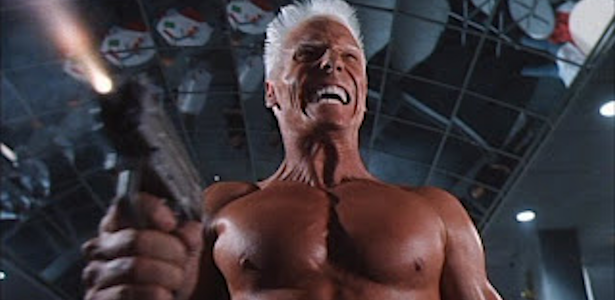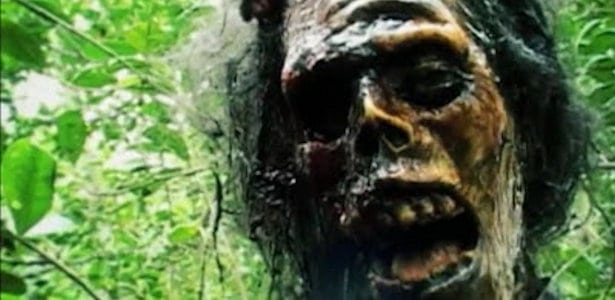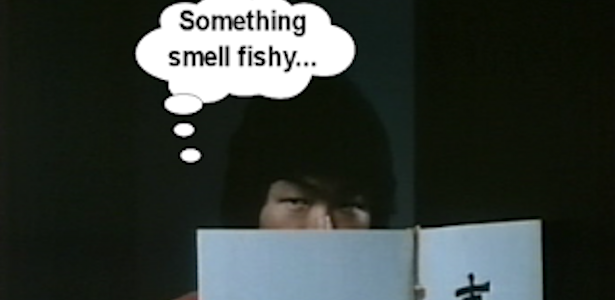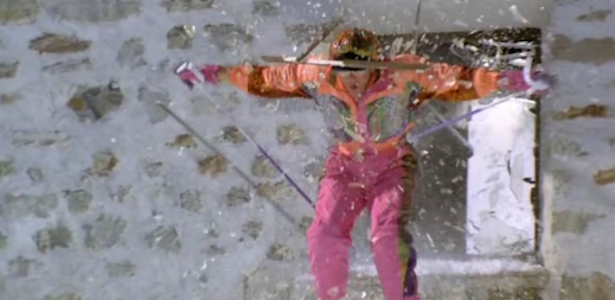We pick up in the third part of our examination of unproduced Don Glut with another disparate trio of projects. These run the gamut from television pilots to comic book adaptations. And, naturally, there are some dinosaurs in there. Make sure to check out part one and part two for the full experience!
#83 - CAPTAIN JUSTICE (late 1960s)
This project is the oldest of all the ones we discussed. As mentioned in part 1 of our coverage, Glut found himself in hot water during his time at USC for his love of comic books and superheroes. So it is ironic that one of the earliest professional pieces he had looked at was a superhero script and that a fellow USC alum is the person who helped him shop it around. “When I was going to USC film school, one of my classmates was Chris Lewis,” he explains. “Chris was the son of Loretta Young, the actress, and Tom Lewis, who was the owner and creator of Family Theater. Chris and I were good friends and we worked on student films together. He suggested that I write a script and he could sell it because he was in touch with a lot of television people at the time.”
Glut’s predilection for comic books made the subject matter a natural choice, but a TV phenomenon also helped play a role in his choice. “BATMAN was real big on TV at the time and superheroes were real big,” he reveals. “So I wrote a script called CAPTAIN JUSTICE and it was a comedy. It was really a take off on the old Republic ROCKET MEN serials than anything else. It was very funny. Chris took it and thought it was great. He said we came – he would always show me his fingers together like he was showing me an itsy bitsy inch – ‘that close’ to selling it. It almost became a pilot for a television series, but it just never happened.”
#84 - DAGAR THE INVINCIBLE (mid-1970s)
Dagar (pronounced “day-gar”) the Invincible was one of several characters that Glut created for Western Publishing’s Gold Key line. Featured in a sword and sorcery series officially titled (deep breath) TALES OF SWORD AND SORCERY FEATURING DAGAR THE INVINCIBLE, Dagar found himself existing in a world of magical beasts and muscled barbarians over a four year, 19-issue run. With sword-and-sandal movies having been a hot commodity worldwide, it seemed only natural to pursue this series as a film project. “I was writing the comic book at the time,” Gluts remembers. “The plan was that I would write it and my friend, the late Bob Greenberg, would direct it and Jim Danforth would do the special effects.”
For any Dagar fans curious about the unmade film’s plot, they need not go far as Glut was hoping to adapt the first four issues of the comic which told the character’s origin and initial quest for revenge. While a script was never written, Glut did do a synopsis based on that opening comic quadrilogy. “The whole quest was against the villain who was responsible for wiping out his whole family and his entire village,” Glut explains. “It was this villain called Scorpio. Dagar sets out after he becomes an adult. He has a mentor like the guy in the KUNG FU (1972) television series. He’s trained in the use of the sword and all of these weapons, so by the time he is an adult he is the best warrior around. He sets off and becomes a mercenary warrior, really on a quest to find Scorpio and kill him. Through the four issues, he gets little clues at the end of each adventure. He finds out the guy he killed might have worked for Scorpio, so he is back on the quest again. By that last issue, he has the one-on-one confrontation with Scorpio.”
Danforth eventually dropped out of the project as he was hoping to begin his own writing-directing career. But not before he did this preproduction painting, which echoes the cover of issue #3 of the comic series and still hangs in Glut’s house.
Glut even did a little dream casting while thinking about the project and felt he knew the perfect actor to portray his invincible warrior. “I was talking to the actor Mike Henry, who had recently been playing Tarzan,” he recalls of his mental acting assignments. “I used to run into him every now and then. I told him, ‘Hey, Mike, we’re doing DAGAR’ and I gave him a whole set of the comic books that had come out until that time.”
Following Danforth’s departure, Glut pressed on with the project and met with Western execs about purchasing the film rights to Dagar and other Gold Key characters. “I finally did meet with the people from the New York office from Western Publishing,” Glut remembers. “I wanted to get the rights to do a script and try to sell it for DAGAR THE INVINCIBLE, THE OCCULT FILES OF DR. SPEKTOR and TRAGG AND THE SKY GODS. Those three comics I had created and was writing at the time. And also TUROK, SON OF STONE, which I had no involvement in creatively. We met and they were all gung ho; they were all ‘what a great idea, movies based on all these characters.’”
Regardless of interest on both ends, Glut was never able to secure the rights and the project ended before it really began. Interestingly, if fans want to see what Dagar might have looked like, they need look no further than one of the genre’s all-time classics in CONAN THE BARBARIAN (1982). “[CONAN director] John Milius was a good friend of mine,” Glut explains. “I don’t think he read my comics, it was a total coincidence. But the two stories are very, very similar.”
#85 - JOURNEY TO THE UNKNOWN LOST ISLAND…THAT TIME FORGOT (1980s/90s)
The final project we’re going to take a look at is one of the more interesting as it involves Don Glut’s passion for dinosaurs, but wasn’t a project he initially conceived. “This was a project that was the idea of Tom Scherman,” Glut explains of this long-titled assignment. “Scherman was a model builder. He worked on FLESH GORDON (1974) and some major studio films too. He was a genius at building models. You could give him a bag that had ten paperclips, a tube of superglue, five poker chips, a hunk of plastic, and a propeller and say, ‘You have an hour, make this into a scale model of the Nautilus submarine’ and he would do it.”
“He wanted to do a take off on the movie UNKNOWN ISLAND (1948) and he thought I would be perfect to write the script. We teamed up with Dave Stipes, who had a special effects house right near where both Tom and I live. The three of us were going to produce this. AIRPLANE (1980) was very popular at the time so I said, ‘Why don’t we do this like AIRPLANE?’”
Glut got to work on the script and fashioned a spoof of the age-old story of a group of explorers that inadvertently end up on an island inhabited by prehistoric beasts. Once again, plans were put into motion for the screenplay to become a picture. Adding to the effects talent behind the camera, Glut lined up good friend Roger Dicken to do the special effects. And comic book artist Frank Brunner did some preproduction paintings and storyboards to help pitch the film. The production had even gone so far as to cast certain actors. “The guy playing ‘Jungle’ Sam, who was basically the Barton MacLane type character from UNKNOWN ISLAND, was Talmadge Scott. He was one of the underwater zombies from SHOCK WAVES (1977) and did some movies with Fred Olen Ray,” Glut divulges of the preliminary casting. “Joleen Lutz, who went on to become a regular on NIGHT COURT with Richard Moll, was playing the spoiled heiress who goes along on the trip. Professor Richardson was going to be played by Ted Richards. We had a jungle girl sexy type character whose name was Cave Girl, she was going to be played by a roommate I had at the time named Linda Golla. And, of course, Bob Burns would have been this big giant gorilla with a horn coming out of the top of its head like the one in the first FLASH GORDON serial.”
JOURNEY... script page & storyboards
Like TEENAGE MONSTER RUMBLE mentioned in our last entry, Glut couldn’t resist an in-joke gag that would be recognizable to genre fans the world over. “I really wanted to use the famous lizard vs. alligator fight from ONE MILLION B.C. (1940) because everybody’s used it,” he reveals of his intention. “So it would have been in black and white and there was one scene where the Professor is trying to make an excuse for the black and white scene behind them and says, ‘Oh, it is volcanic ash in our eyes.’ He tries shooting one of the dinosaurs and shoots a hole in the rear-projection screen. Those were the kind of jokes we had.”
Even with producer Robert Swanson again attached, the project was unable to find backing. “That would have cost a little bit more to do,” Glut says of the project. It is something that was continually updated and pursued for a period of time though. “The last draft was written right around when JURASSIC PARK (1993) came out as I had some JURASSIC PARK references in it,” Glut reveals. Sadly, project originator Scherman passed away in 1995 due to lymphoma at the age of 54 and progress lulled after that. However, with cinematic dinosaurs always in vogue and a fourth JURASSIC PARK threatening to rear its head in 2014, perhaps the project will receive a new lease on life. In the right hands, it could be pretty darn funny I imagine.
THE END?
Hard to believe it has already been two weeks since we began our journey into the unproduced world of Don Glut. Believe it or not, there are far more projects that he has written/developed than the ten we highlighted. Crazy titles such as MAN-LIZARD, STONE AGE AVENGER, DINOSAUR GIRL (with MAD’s Sergio Aragones), BLOOD JUSTICE, and SWEET NIGHTMARES (the last two being projects he still hopes to make). “The ones I talked about were ones that actually had a good chance of getting made,” Glut concludes. “Everybody has scripts stacked up in their filing cabinets, but these scripts had other people involved and interested in them.”
#83 - CAPTAIN JUSTICE (late 1960s)
This project is the oldest of all the ones we discussed. As mentioned in part 1 of our coverage, Glut found himself in hot water during his time at USC for his love of comic books and superheroes. So it is ironic that one of the earliest professional pieces he had looked at was a superhero script and that a fellow USC alum is the person who helped him shop it around. “When I was going to USC film school, one of my classmates was Chris Lewis,” he explains. “Chris was the son of Loretta Young, the actress, and Tom Lewis, who was the owner and creator of Family Theater. Chris and I were good friends and we worked on student films together. He suggested that I write a script and he could sell it because he was in touch with a lot of television people at the time.”
Glut’s predilection for comic books made the subject matter a natural choice, but a TV phenomenon also helped play a role in his choice. “BATMAN was real big on TV at the time and superheroes were real big,” he reveals. “So I wrote a script called CAPTAIN JUSTICE and it was a comedy. It was really a take off on the old Republic ROCKET MEN serials than anything else. It was very funny. Chris took it and thought it was great. He said we came – he would always show me his fingers together like he was showing me an itsy bitsy inch – ‘that close’ to selling it. It almost became a pilot for a television series, but it just never happened.”
#84 - DAGAR THE INVINCIBLE (mid-1970s)
Dagar (pronounced “day-gar”) the Invincible was one of several characters that Glut created for Western Publishing’s Gold Key line. Featured in a sword and sorcery series officially titled (deep breath) TALES OF SWORD AND SORCERY FEATURING DAGAR THE INVINCIBLE, Dagar found himself existing in a world of magical beasts and muscled barbarians over a four year, 19-issue run. With sword-and-sandal movies having been a hot commodity worldwide, it seemed only natural to pursue this series as a film project. “I was writing the comic book at the time,” Gluts remembers. “The plan was that I would write it and my friend, the late Bob Greenberg, would direct it and Jim Danforth would do the special effects.”
For any Dagar fans curious about the unmade film’s plot, they need not go far as Glut was hoping to adapt the first four issues of the comic which told the character’s origin and initial quest for revenge. While a script was never written, Glut did do a synopsis based on that opening comic quadrilogy. “The whole quest was against the villain who was responsible for wiping out his whole family and his entire village,” Glut explains. “It was this villain called Scorpio. Dagar sets out after he becomes an adult. He has a mentor like the guy in the KUNG FU (1972) television series. He’s trained in the use of the sword and all of these weapons, so by the time he is an adult he is the best warrior around. He sets off and becomes a mercenary warrior, really on a quest to find Scorpio and kill him. Through the four issues, he gets little clues at the end of each adventure. He finds out the guy he killed might have worked for Scorpio, so he is back on the quest again. By that last issue, he has the one-on-one confrontation with Scorpio.”
Danforth eventually dropped out of the project as he was hoping to begin his own writing-directing career. But not before he did this preproduction painting, which echoes the cover of issue #3 of the comic series and still hangs in Glut’s house.
Jim Danforth art:
Dagar #3
Following Danforth’s departure, Glut pressed on with the project and met with Western execs about purchasing the film rights to Dagar and other Gold Key characters. “I finally did meet with the people from the New York office from Western Publishing,” Glut remembers. “I wanted to get the rights to do a script and try to sell it for DAGAR THE INVINCIBLE, THE OCCULT FILES OF DR. SPEKTOR and TRAGG AND THE SKY GODS. Those three comics I had created and was writing at the time. And also TUROK, SON OF STONE, which I had no involvement in creatively. We met and they were all gung ho; they were all ‘what a great idea, movies based on all these characters.’”
Regardless of interest on both ends, Glut was never able to secure the rights and the project ended before it really began. Interestingly, if fans want to see what Dagar might have looked like, they need look no further than one of the genre’s all-time classics in CONAN THE BARBARIAN (1982). “[CONAN director] John Milius was a good friend of mine,” Glut explains. “I don’t think he read my comics, it was a total coincidence. But the two stories are very, very similar.”
#85 - JOURNEY TO THE UNKNOWN LOST ISLAND…THAT TIME FORGOT (1980s/90s)
The final project we’re going to take a look at is one of the more interesting as it involves Don Glut’s passion for dinosaurs, but wasn’t a project he initially conceived. “This was a project that was the idea of Tom Scherman,” Glut explains of this long-titled assignment. “Scherman was a model builder. He worked on FLESH GORDON (1974) and some major studio films too. He was a genius at building models. You could give him a bag that had ten paperclips, a tube of superglue, five poker chips, a hunk of plastic, and a propeller and say, ‘You have an hour, make this into a scale model of the Nautilus submarine’ and he would do it.”
“He wanted to do a take off on the movie UNKNOWN ISLAND (1948) and he thought I would be perfect to write the script. We teamed up with Dave Stipes, who had a special effects house right near where both Tom and I live. The three of us were going to produce this. AIRPLANE (1980) was very popular at the time so I said, ‘Why don’t we do this like AIRPLANE?’”
JOURNEY... script page & storyboards
(click to enlarge)
ONE MILLION B.C. (1940)
JOURNEY... art
Even with producer Robert Swanson again attached, the project was unable to find backing. “That would have cost a little bit more to do,” Glut says of the project. It is something that was continually updated and pursued for a period of time though. “The last draft was written right around when JURASSIC PARK (1993) came out as I had some JURASSIC PARK references in it,” Glut reveals. Sadly, project originator Scherman passed away in 1995 due to lymphoma at the age of 54 and progress lulled after that. However, with cinematic dinosaurs always in vogue and a fourth JURASSIC PARK threatening to rear its head in 2014, perhaps the project will receive a new lease on life. In the right hands, it could be pretty darn funny I imagine.
THE END?
Hard to believe it has already been two weeks since we began our journey into the unproduced world of Don Glut. Believe it or not, there are far more projects that he has written/developed than the ten we highlighted. Crazy titles such as MAN-LIZARD, STONE AGE AVENGER, DINOSAUR GIRL (with MAD’s Sergio Aragones), BLOOD JUSTICE, and SWEET NIGHTMARES (the last two being projects he still hopes to make). “The ones I talked about were ones that actually had a good chance of getting made,” Glut concludes. “Everybody has scripts stacked up in their filing cabinets, but these scripts had other people involved and interested in them.”


































































